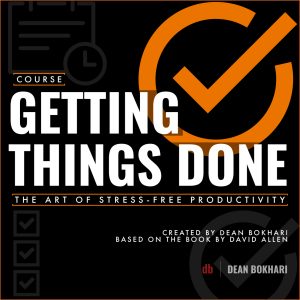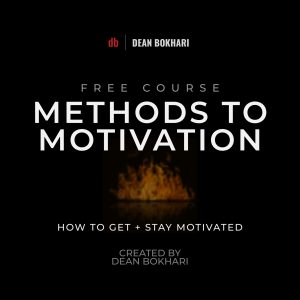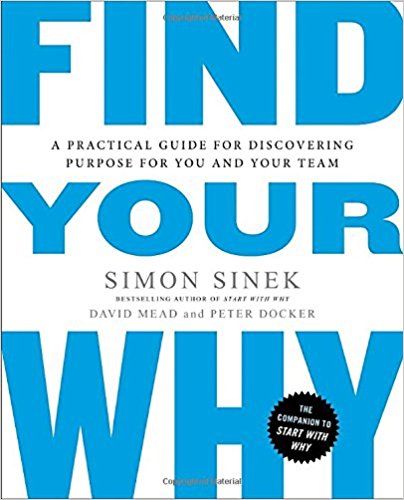
Find Your Why: A Practical Guide for Discovering Purpose for You and Your Team
by Simon Sinek, David Mead, Peter Docker
About:
Find Your Why digs deeper into one of the most crucial aspects of any business or career, and the first step to seeing progress – finding the WHY behind doing what you do. It’s not just about discovering it and defining it clearly, but also about putting it into practice and letting your business or career thrive as a result.
You can consider this book the step-by-step guide to Simon Sinek’s previous bestseller – Start With Why. It’s where the real magic happens as you get to see exactly what you need to do in order to not just take action for yourself and your team, but also inspire anyone around you to work with a sense of purpose and their highest level of contribution. It’s filled with exercises that are meant to help you find the right direction, and confidently take it, while helping your company get there too.
Here’s what you’ll learn about in this book summary:
- Why your WHY matters and how it can be a turning point in your life and career.
- How individuals should go about discovering their purpose, and what’s the right approach for groups.
- How to put the newly found WHY into action and inspire growth everywhere around you.
Crucial quotes
”Whether you’re listening to this as an entrepreneur, an employee, as a leader of a team or division, or you want to tackle the WHY of your entire organization, discovering the WHY injects passion into our work.”
”While other individuals and organizations may express their WHY in a way that’s similar to yours, it’s how you bring your WHY to life that makes you unique.”
”Remember, the WHY is not who we aspire to be. It’s who we truly are.”
Tweetable summary
The path to long-term success for you and your team begins with finding your WHY and acting in accordance with it.
Links
- Get Book
- Podcast: How to Draft a Why Statement
Downloads
THE BIG IDEAS:
1. Start with WHY.
In his book, Start with WHY, Simon Sinek shows us what he refers to as the “Golden Circle” to explain how some of the world’s most well-known leaders were able to achieve extraordinary levels of success — he talks about people like Martin Luther King Jr, the Wright brothers, and Steve Jobs… What was it that these people did that differentiated them from others who were just as smart, just as hard-working, and sometimes even better funded?
Simon tells us that extraordinary leaders were guided by the Golden Circle. Here’s how it goes…
All businesses, organizations, and careers operate on three levels:
(1) WHAT we do, (2) HOW we do it, and (3) WHY we do it.
We’re all acquainted with what we do — the products we sell, the services we offer, the jobs we do.
A few of us know how we do it — the things we think differentiate us or make us unique compared to the rest of the crowd, or our competition.
But very few of us can clearly explain WHY we do what we do…
Our WHY is the purpose, the cause, or the belief that drives every organization and every person’s individual career. WHY does your company exist? WHY did you get out of bed this morning? And WHY should anyone care?
Here’s how the authors put it in the book: “When we meet new customers or clients, the first thing most of us tell them is what we do. Then we explain how we do it or how we are different.” …And we think this is going to be enough to gain their business, change their point of view or persuade them to take action? No.
Here’s an example of two different pitches from the same company, the product they’re trying to sell is none other than plain old paper. Example Pitch #1 uses a basic, typical approach to selling. Example Pitch #2 uses an approach that starts with WHY.
- Example Pitch #1 (typical approach) — “We sell paper. We offer the highest quality product at the best possible price. Lower than any of our competitors. Wanna buy some?”
This is a very rational pitch. It tells us clearly what the company does and tries to persuade buyers to choose their product over another product on the basis of features and benefits. Now, this approach may work sometimes, but as soon as the buyer finds a better deal, they’ll be gone. Why? Because the pitch doesn’t differentiate this specific vendor from other companies in any way that really matters. We can’t inspire people by telling them about features and benefits. Loyalty and long-lasting relationships are based on something deeper.
Let’s revise this pitch by starting it with WHY:
- Example Pitch #2 (approach that starts with WHY) — “What good is an idea if it can’t be shared? Our company was founded to help spread ideas. The more ideas that are shared, the greater the likelihood those ideas will have an impact in the world. There are many ways to share ideas; one is the written word. That’s where we come in. We make paper for those words. We make paper for big ideas. Wanna buy some?”
What a difference, right?
Starting with WHY turned a mundane product like paper into something people can relate to, even be inspired by. “And if it can do that for a commodity,” the authors tell us, “imagine what it can do for a product that really can stand out. This pitch is not based on facts and figures, features and benefits. Those things have value but not first.
Leading with WHY has a deeper, more emotional and ultimately more influential value. When we use the second pitch, we’re no longer talking about paper. We’re talking about who our company is and what we stand for. Of course, you’ll always get those people who just want a ream of paper. And yet, if your customers’ personal beliefs and values align with those expressed in your pitch— i.e., if they believe in the spread of ideas— then they are much more likely to want to do business with you, not just one time, but over and over and over again. In fact, they are more likely to stay loyal even if another vendor offers a better price. It says something about them when they do business with a company that reflects their beliefs.”
Let’s go over another example of starting with WHY from the book; this time about how an individual articulated her WHY to get the edge for a job interview:
Emily was applying for a position at a large global corporation. She had a great resumé, which allowed her to get her foot in the door with a job interview. She walks in, sits down, and the company’s HR director looks at her and opens with the following question: “So, what can you bring to our company?”
The interview panel knew Emily was a bright, straight-A student, but because she’d just graduated from college, they were concerned about her lack of experience… More importantly, they wanted to know whether she’d be a good fit for the company-culture, and how she deals with pressure.
“We have a lot of highly qualified applicants for this position…” the HR director says, “tell us what you’ve got that they don’t.”
Emily was ready… Not because she’d practiced potential interview questions. Not because she’d studied-up on the company’s history. But because she was about to start with WHY:
“Before I talk about what I might be able to bring to your company,” she said with a calm tone, “let me first give the reason I get out of bed every day… I strive to help people be the best version of themselves. That’s what inspires me. Based on your website, I sense that this is precisely what you believe in too. So, WHY wouldn’t I apply to be part of your organization?”
Emily’s statement caught everyone’s attention. The interviews were no longer shuffling papers and secretly looking at emails on their iPhones anymore—they were looking at Emily now. At this point, Emily started telling them about her skills and strengths, but she already had the interview on lock—the battle was already won. Her first exchange, which lasted less than 30 seconds, had already inspired the interviewers to hire her.
How’d she pull this off? By starting with her WHY, Emily spoke directly to the limbic, decision-making centers of the interviewer’s brains. This is WHY starting with WHY is so powerful — it appeals to the part of our brain that’s responsible for emotional connection. The part of our brain that processes the What-related stuff is harder for people to connect with.
“By showing who she was,” the authors tell us, “not just what she could do, she formed an instant and genuine connection. That’s all it took. They knew in their gut that they wanted her on their team. It was relatively straightforward for Emily too. Instead of using prep time to come up with clever answers to a host of hypothetical questions, she’d focused on being comfortable with communicating her WHY. Once she faced the panel, all she had to do was speak “from her heart” (i.e., her limbic brain) about what inspired her to want to work there. The rest of the interview felt much more like a conversation than an inquisition and all her answers validated the panelists’ intuition. Afterward, her cell phone rang before she even got home. It was the HR director offering her the job.
Throughout the rest of this book summary, you’ll learn about how to do what Emily did, and what the paper company did — you’ll learn how to find your WHY, and start with WHY. And once you can do that, you’ll be able to clearly articulate what makes you feel fulfilled, and you’ll better understand what drives your behavior when you’re operating at your peak. And once you can do that, you’ll have a point of reference that can guide you, like the north star, for everything you do going forward. You’ll be able to make better decisions for your career, your business, and your life. You’ll know how to inspire others to work with you, buy from you, or team-up with you for a common-cause…
Whether you’re an individual trying to find your WHY, or whether you’re a full-scale company looking for your WHY — the Big Ideas we’ll cover in the summary will guide you along. And by the time you’re done, you’ll find and unleash your very own WHY.
2. The 3 stages of a WHY-discovery.
The authors designed the book to help both individuals and teams discover their WHY. We’ll be covering both processes throughout this summary, but the basic framework they outline in the book is exactly the same whether you’re trying to find your own WHY as an individual, or whether you’re trying to help others find theirs.
Here’s how it goes:
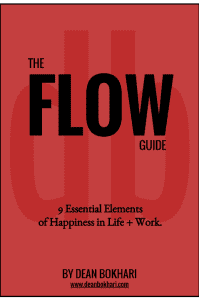
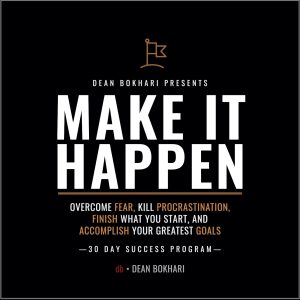
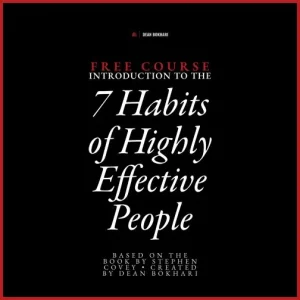 Free Course: Intro to The 7 Habits of Highly Effective People by Stephen Covey • Instructed by Dean Bokhari.
Free Course: Intro to The 7 Habits of Highly Effective People by Stephen Covey • Instructed by Dean Bokhari.